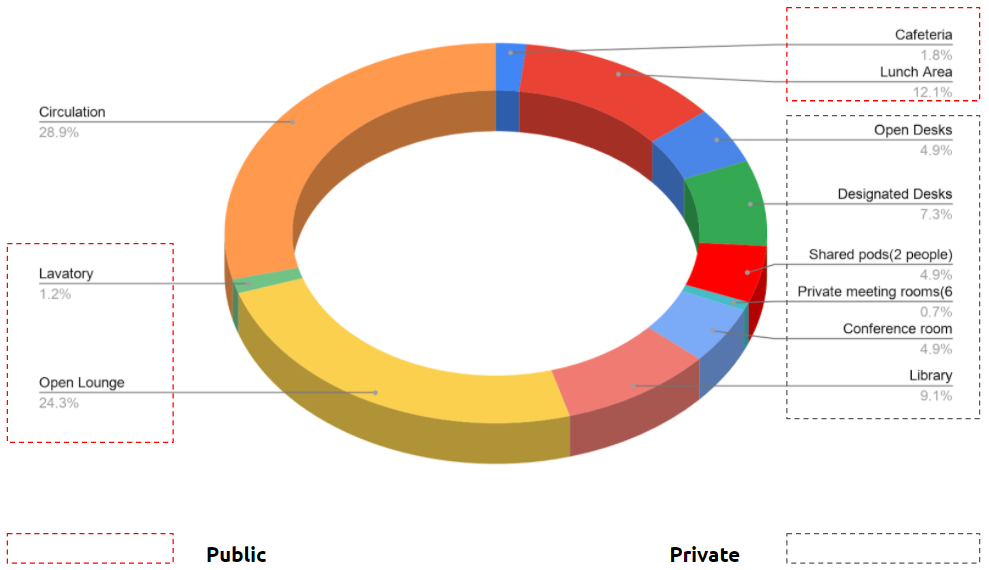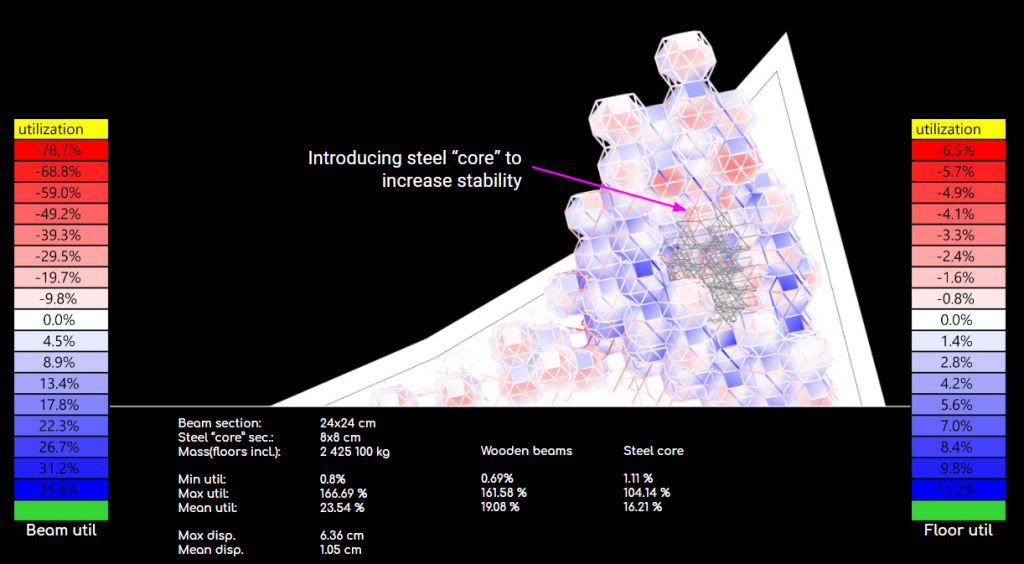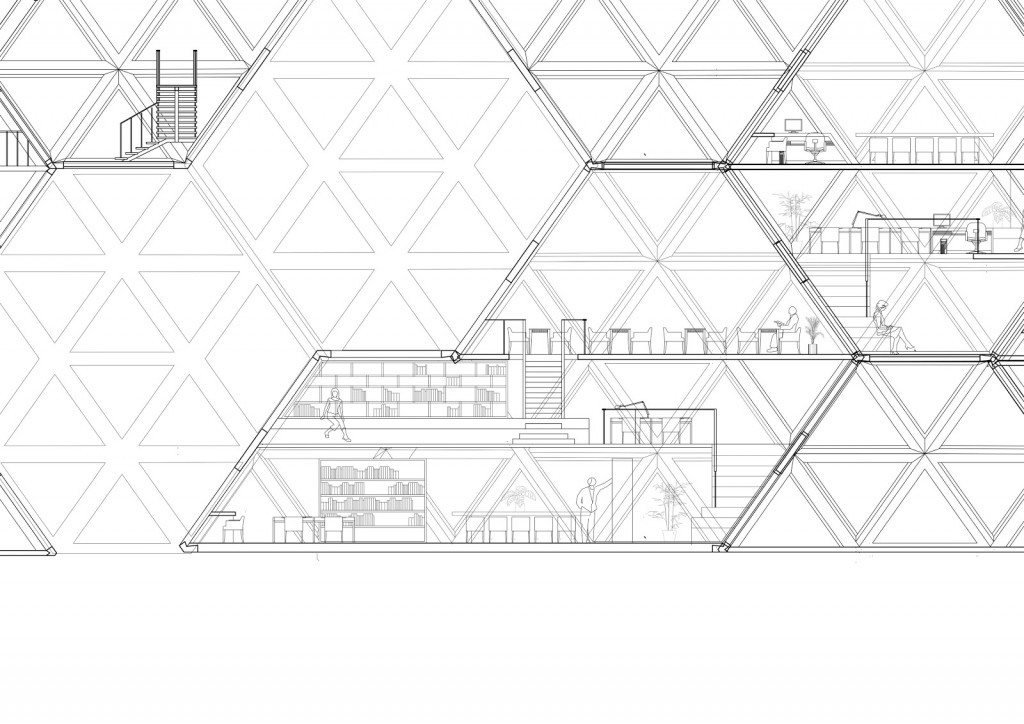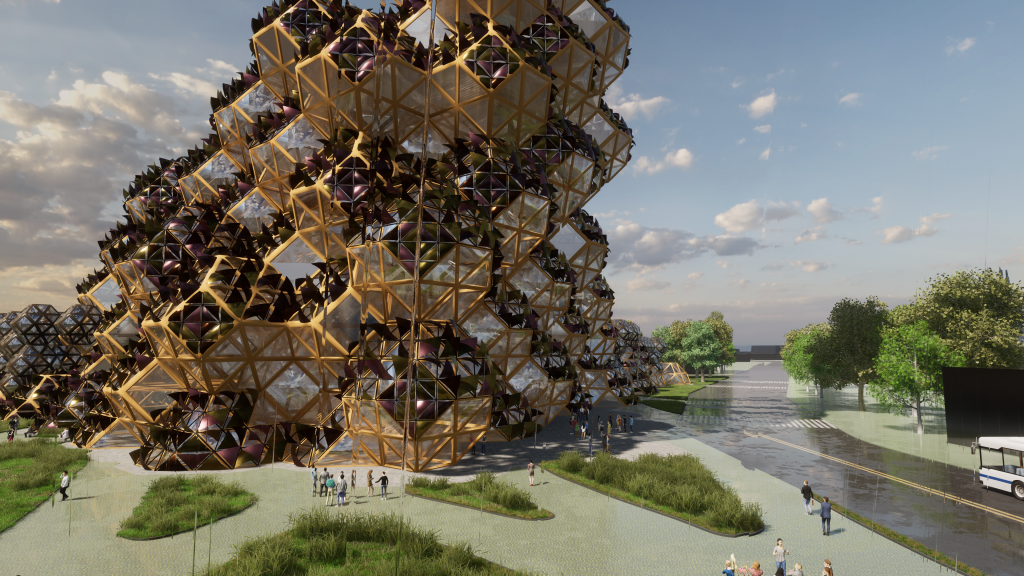MODULAR EDIFICE – Modular thinking as a way of designing sustainable building
Why modular?
Modular entities have objects which repeat with respect to each other. eg. Cells Modularity can also lead to sustainability as the formwork used to build one module can be repeated to build the other modules hence saving material, money, as well as time. Modularity can allow for phase wise construction which can help in incremental building.
SITE ANALYSIS, MUMBAI, INDIA
The site is located in a bustling industrial area next to a comparatively idle port in the city of Mumbai. The urban fabric consists of majorly commercial buildings and warehouses as this is an industrial area. The site is closer to the east coast of the Mumbai City.

The site is accessible through road and rail and within 5 minutes of walk from the nearest railway station (Reay Road) and it is located on two main roads. Hence the site is a potential commercial center lying undeveloped because of the heavy noise from the surroundings.
Plot size : 300 x 200 m

COMMERCIAL – INDUSTRIAL
DESIGN STRATEGIES
CONTEXT AS THE DRIVING FORCE OF DIGITAL DESIGN
Objectives:
- To use modular thinking as a way of sustainable building by developing a modular building almost entirely in timber and upcycling existing materials as a carbon reducing and sustainable approach.
- To look into how non visual aspects like radiation/sound/noise and wind can also shape the design with the help of digital simulations.
- Integrating active environmental systems that contribute to both structural integrity and optimize environmental impacts.
- To address the lack of public space in Mumbai and to increase the quality of public/social life in Mumbai.
Shield the site from noise by placing the building along the boundary of the site
Protect the building from strong light from south and west by using a second skin
Promote views towards the sea by increasing the height of the building
Break down the building to allow for cross ventilation and for public access into the site
PROGRAMMATIC POTENTIAL
The proposed programs for the site are a public retail area with landscaped paths at the site level and a commercial office space for the rest of the building.

The programmatic requirements for a co-working space in general are studied in order to be incorporated in the proposal. Public spaces like the library, cafeteria.

Developing interlocking modular approach:

The modules were redeveloped according to the learnings to prepare the final versions for aggregation.

Proposed solutions for function in single modules and clusters
The shared pods can be attached to the larger modules which can be a cabin for a single person as well as for 2 people as shown.
A small composition of the modules showing the different functions.
OVERALL FORM FINDING
THERMAL COMFORT ANALYSIS
The thermal comfort analysis for extreme climate periods show that the region with denser vegetation remains relatively comfortable for major part of the year. These zones are identified as green zones to which pedestrian paths lead into.

SITE PLAN
The initial access points on the site boundary is connected with interior points where maximum interaction is desired. This creates a network of paths which is then further developed to form smooth walkways from the streets, through the building into the green zones.
INITIAL BUILDING FOOTPRINT
The access points on the boundaries are defined based on the street type with higher number of access from the street with the highest pedestrian activity. The vehicular access into the co-working block is provided from the connecting road with low pedestrian and vehicular activity. Access from the main road into the site is limited.

FORM FINDING USING WALLACEI OPTIMIZATION

FV1, FV2 Maximum exposure towards ocean (East) and South
FV3 Minimum exposure towards West (sun radiation and view improvement)
FV4 Minimum total sun radiation (yearly analysis)
FV5 Aim for volume range of: 30 000 – 31 000 m3


Chosen iteration that fits both the fitness values and the overall appease.
INTEGRATION OF SIMULATION AND MODULARITY
By using Wasp plugin the geometry that was found using simulation was aggregated with truncated octahedron modules. The initial modular approach was tested.

MASTERPLAN STRATEGIES
- Defining area on ground floor for module aggregation based on building geometry and site analysis.
- Dividing site into equally spaced grid that is same as biggest module span [ 8 * sqrt(2)]m.
- Running simple optimization simulation to figure out best initial aggregation. [rotation angle and grid movement allowed]
By taking inferences from early site study and form finding a site plan was created.

STRUCTURAL ANALYSIS
The final form chosen was structurally analyzed to understand the benefits and shortcomings of the form which can help in programmatic distribution.
The simulation model was prepared and analyzed based on the following result cases:
- Gravity
- Wind load analyzed for 2 predominant directions
a. West – facade area 4226 m2
b. North – facade area 3505 m2
Force: 1.5 kN/m2 - Floor load
Total area: 12 928m2 Force: 1.5 kN/m2
The model was analyzed using two approaches. The first one was the shell model (h=6cm), the second was a rectangular timber beam model (24 x 24cm). Final iteration was further reinforced by introducing steel grid(8 x 8cm) in atrium to improve overall performance and decrease total mass of the building.


Only the final results are showcased in this blogpost, detailed analysis is submitted in Digital Tools for Structural Optimization Strategies blogpost.*
PROGRAM CLUSTERING
Based on earlier analysis and module clustering algorithm the function was distributed into the aggregation.

Showcasing of the modules aggregations:
CONFERENCE /MEETING ROOMS || 33*23*39m
LARGE OFFICES || 30*35*17m
LIBRARY / OPEN DESKS || 27*37*22m
Main circulation inside the building was designed to be located in the atrium. [white modules are communication]
Exemplary floor plan.

Exemplary sections.




INTEGRATION OF THE ENVELOPE
Due to high radiation in Mumbai and glare analysis inferences the active external skin system was introduced. Not only it is designed to minimize the effects of sun on the building, but also to support natural ventilation.

Radiation analysis of the building, the parts of the façade with the highest amounts of radiation were selected.

Found elements were further populated with designed system.
Active shading system reacts to the daily sun path to shade the interior of the building from intense radiation. Each panel moves independently based on sensors. This allows to maintain bigger openings without additional cooling. The panel movement can also be used to promote natural ventilation during night.
Analysis of the radiation on the module tested for the highest radiation period. The analyzed time was 15.02, from 9:00 to 10:00.

FINAL RENDERS







Credits
MODULAR EDIFICE – Modular thinking as a way of designing sustainable building is a project of IAAC, Institute for Advanced Architecture of Catalonia developed at Master in Advanced Computation for Architecture & Design in 2020/21 by:
Aleksander Mastalski, Krishnanunni Vijayakumar and Keshava Narayan
lead faculty: Rodrigo Aguirre faculty assistant: Oana Taut

